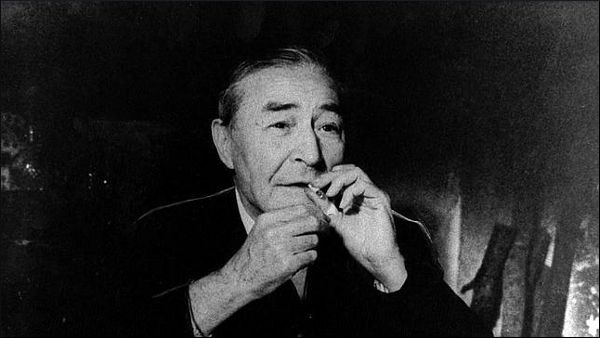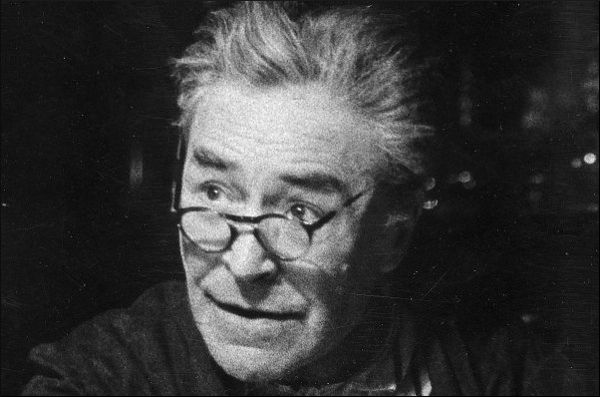
- The Gray Notebook
- Published by: Ediciones Destino
- Level: Intermediate
- First Published in: 1966
In this non-fiction diary, author Josep Pla, who was then 21 years old, describes his feelings and opinions on just about every aspect of his life, after a flu epidemic forces him to leave his Barcelona university and settle back in his hometown.

Between the ages of 21 and 22, talented and budding writer Josep Pla spent a year thinking about life. When a flu epidemic forced him to leave Barcelona and his university for a few months, he moved back to his hometown of Palafrugell, a rural area in northern Catalonia. Although he did not know it then, this unexpected and annoying circumstance would determine his future as a writer.
To let his thoughts flow, he impassively began writing on a gray journal the day he turned 21. From the beginning, it’s clear that this shy and silent guy will have an opinion on everything, from his mum’s reasons for making special cakes on his birthday – which is unusual, since that just happens to fall on a saint’s day – to why he is used to the cold. Pla presents everyday situations followed by genuine and funny comments expressing the only feeling he has, that he does not feel anything.
"Probably the most relevant feature of the book is the exquisite and relentless effort Pla makes to find new ways of describing his failure to understand the world he lives in."
Witty and elegantly written, the overall result of this diary is that it’s an exercise in creative freedom, a mix of genres, and absolutely devoted to the beauty of words. In fact, probably the most relevant feature of the book is the exquisite and relentless effort Pla makes to find new ways of describing his failure to understand the world he lives in. Like many people in their twenties, he has some vague plan for his life. “Sonsònia” is one of the first words he uses to describe his unease, and it is quite a good example of what The Gray Notebook is about. This word cannot be found in many contemporary Catalan dictionaries, although some still remind us that it refers to a “monotonous and repeated sound.” The allure of this archaism has to do with its alliteration and the fact that it can suggest heavenly pictures in our heads if we don't know the exact meaning.

The book is full of such magnificent words, alongside many Gallicisms like “charme,” “car” (instead of “perquè,” meaning “because”), or “pas” (used in negative clauses). Although many of these terms might not sound contemporary – “baluernes” (bulky objects), “ensulsiada” (collapse), or “llepissosa” (viscous) –, Pla delivers an accessible internal monologue, full of long but simple sentences where every word counts. The consistency of the writing style crafts a sturdy structure where the fear of solitude is beautifully phrased. Apart from the particular selection of words, the crucial feature of the book is its rhythm: “El riu passa, i tot em porta a quedar-me, assegut, a la riba” (The river flows, and everything leads me to remain, seated, at the bank). Mostly because of the commas, the book can be listened to or recited out loud, as the words almost want to be touched when they hit our understanding. This melody, though, can falter when Pla jumps from one subject to another, as the structure of the journal allows him to do this without further explanation.
"Although the book was actually written by the young Pla, he rewrote and edited the journal throughout his life, and it wasn’t until he was in his sixties that it was published."
Metaphors and similes consist of paradoxes formed by nouns and adjectives that would not commonly match: as in “I la màgica sorpresa de la neu, silenciosa i quieta...” (And the magic surprise of the snow, silent and still...); “El fred era, doncs, coent” (Cold was, therefore, spicy); and “Una pluja fina, densa, menuda, pausada. No fa gens d'aire” (A thin, heavy, small, unhurried rain. There is no air at all). Alongside these literary means, the author builds strong visual passages like still lifes: “L'ordre té això de dolent: paralitza, admira, invita a no tocar res. Invita a deixar-ho tot per a demà. Deixar una cosa per a demà és deixar-la per sempre més” (Tidiness has this bad thing: it paralyses, astonishes, invites one not to touch anything. It invites one to leave everything for tomorrow. Leaving something for tomorrow is leaving it forever). Pla's simple literary style also allows him to be straightforward regarding his feelings: “La vida es converteix en una nostàlgia de la dolçor perduda, de la felicitat robada” (Life becomes a nostalgia of lost sweetness, of stolen happiness). The strategy is always to revolve around daily routine, in which he finds a mirror that reflects his deep anxiety.
Pla’s recollections and thoughts on the world that surrounds him seem to be written, at times, by an old person. And in a way, that’s how it happened. Although the book was actually written by the young Pla, he rewrote and edited the journal throughout his life, and it wasn’t until he was in his sixties that it was published. This probably contributed to the nostalgia with which Pla talks about his past. On the flip side, though, the older Pla respected the uncertainty he had when he started to write his journal, and did not spoil the quiet unease he was feeling at the time. It was in 1956, due to an allowance by Franco’s censorship, that he published The Gray Notebook on the first volume of his Collected Works, which ended up encompassing 47 books, now displayed at his own Foundation. It was his unique diary, though, that gave him his greatest recognition as a writer, as it sums up Pla’s personality and his fine-grained style.

